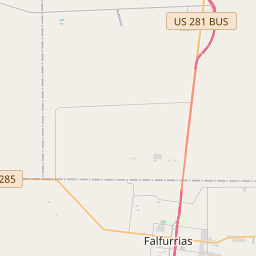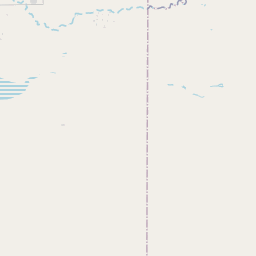Site of Los Olmos
Historical marker location:












The first permanent settlement in Brooks County, Los Olmos was located at the southwest corner of El Paisano Land Grant, given to Ramon de la Garza about 1830 by the Mexican state of Tamaulipas. Situated near the main route to the Rio Grande, the village served a region settled originally by ranchers from northern Mexico. By 1880, it had a post office, stores, and a school, which operated until 1945. The schoolhouse was the site of services conducted by traveling priests. As the town of Falfurrias grew, Los Olmos began to decline. Descendants of its founders still reside in this area. (1976)
As one of the most visible programs of the Texas Historical Commission (THC), historical markers commemorate diverse topics in Texas history, including: the history and architecture of houses, commercial and public buildings, religious congregations, and military sites; events that changed the course of local and state history; and individuals who have made lasting contributions to the state, community organizations, and businesses.
The Johnson Space Center, located in Houston, played a crucial role in the development of the U.S. space program. It was here that NASA trained its astronauts and mission control teams, and it continues to be an important center for space research and exploration today.
During the Texas Revolution in the 1830s, Brooks County became a significant battleground between Mexican troops and Texan rebels. The Battle of Espantosa, fought in the county in 1835, was a notable conflict that helped secure Texan independence from Mexico. After the revolution, the region experienced a surge in population as settlers arrived from the United States, seeking new opportunities in farming and ranching.
The establishment of the King Ranch, one of the largest and most influential ranches in the state, in the mid-19th century had a significant impact on Brooks County. The ranch brought economic stability, creating jobs and boosting the local economy. As the ranching industry grew, so did the county's population and reputation as a center for livestock production.
Brooks County also has a troubled past related to racial tensions and civil rights struggles. During the early 20th century, the county was a hotspot for racial violence against African Americans and Mexican Americans. The infamous "brooks county murders" in 1919, where several Black individuals were lynched by a mob, highlight the dark side of the county's history. Despite these challenges, Brooks County has evolved and grown over time, and today, it continues to thrive as an important agricultural and cultural hub in Texas.
Brooks County Timeline
This timeline provides a concise overview of the key events in the history of Brooks County, Texas.
- 1848: Brooks County is established by the Texas Legislature, named after James Abijah Brooks, a Texas Ranger and a Texas Revolution veteran.
- 1857: The first permanent settlement is established in Brooks County near the present-day town of Falfurrias.
- 1870: Falfurrias is founded and becomes the county seat of Brooks County.
- 1904: The St. Louis, Brownsville and Mexico Railway reaches Falfurrias, boosting the town's economic growth.
- 1919: The discovery of oil and gas in the county brings a new wave of prosperity.
- 1920s-1930s: The population of Brooks County increases rapidly due to the oil and gas industry, agriculture, and ranching.
- 1940s-1950s: Brooks County sees a decline in population due to the depletion of oil and gas resources.
- 1990s: Falfurrias experiences economic growth with the establishment of several manufacturing and processing plants.
- 2005: Hurricane Katrina brings heavy rainfall and flooding to Brooks County, causing significant damage.
- Present: Brooks County continues to be an important agricultural and ranching region in Texas, known for its cattle ranches and citrus orchards.